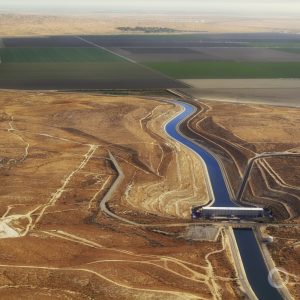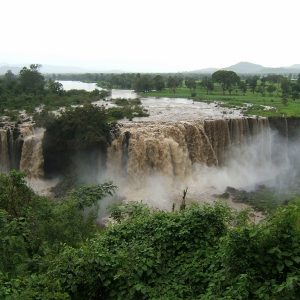What’s Up With Water for November 26, 2018
I’m Eileen Wray-McCann, for Circle of Blue, and here’s What’s Up with Water, your “need-to-know news” of the world’s water.
The United States Government Released a Major Report on the Impact of Climate Change
In the United States, a major government report released last week warns that without significant limits on global warming, the damage to the country’s economy, health and environment will be devastating.
Thirteen federal agencies and more than 300 scientists contributed to the National Climate Assessment, which the New York Times described as “the starkest warnings to date of the consequences of climate change for the United States.” This comes one month after a United Nations climate change panel issued its most alarming and detailed assessment of potential economic and humanitarian crises in the next decades from a failure to curtail greenhouse gas emissions.
The U.S. report says that unaddressed climate change could reduce the country’s domestic product up to 10% by the end of the century. This would be more than twice the losses of the Great Recession a decade ago. The report also references record-breaking wildfires in California, crop failures in the Midwest and disintegrating infrastructure in the South. It foresees the disruption of American exports and supply chains, the regression of agricultural productivity and the expansion of fire seasons.
This is the fourth National Climate Assessment, which the U.S. government is required to release every four years. The report builds upon existing scientific studies with a more precise measurement of the economic cost of climate change.
In short, the United States is entering uncharted territory. The report says “The assumption that current and future climate conditions will resemble the recent past is no longer valid.”
The report, says the Times, “covers every region of the United States and asserts that recent climate-related events are signs of things to come. No area of the country will be untouched, from the Southwest, where droughts will curb hydropower and tax already limited water supplies, to Alaska, where the loss of sea ice will cause coastal flooding and erosion and force communities to relocate, to Puerto Rico and the Virgin Islands, where saltwater will taint drinking water.”
It adds that the Midwest and Northeast will see more flooding after rainstorms, such as the Missouri River deluge that forced a power plant near Omaha to shut down for years. Other areas will suffer increasing drought and further stress to groundwater. Drought can lead to wildfire, as is the case in California, where the Camp fire, the most damaging in the state’s history, has killed dozens of people. The report predicts that wildfires will become more common in areas unfamiliar with annual fire seasons, such as the Southeast.
The report notes two areas where climate change will be most keenly felt: trade and agriculture.
Extreme weather, both domestically and internationally, disrupts production, supply chains and the transportation of goods. Warmer temperatures, drought, flooding and fire harm crops and livestock. The scientists predict that by 2050, changes in temperature and rainfall will diminish farm productivity in the Midwest to the lowest levels in 30-some years.
Scientific predictions about the cascading effects of global warming have been largely vindicated thus far. The key factor going forward, according to the report, is limiting the amount of carbon emissions that humans produce.
The report has three main suggestions for action: setting and enforcing a price for greenhouse gas emissions, regulations that limit greenhouse pollution, and public investments in clean-energy research.
The report was released the afternoon following Thanksgiving. Its findings run counter to the agenda of President Trump, who has pursued environmental deregulation by linking it to economic growth. The Trump administration has been aggressive in moving to allow more greenhouse gases from vehicles and power plants, and the president has promised to pull the U.S. out of the Paris Agreement, in which nearly every country in the world has pledged to cut carbon emissions. “Just this week,” noted the Times, “he mocked the science of climate change because of a cold snap in the Northeast, tweeting, ‘Whatever happened to Global Warming?’”
In China, glaciers are melting fast
In China, glaciers are melting faster, displacing thousands, threatening the future of millions and embodying the planet’s vulnerability to warmer temperatures.
Satellites show that since the mid-1980s, glaciers in western China have retreated more than twice as fast as before that period. The Chinese Academy of Sciences said this fall that glaciers in the Qinghai-Tibet plateau shrank 15 percent in the last half-century because of rising temperatures. They said that the region is warming faster than the global average.
“This is a wake-up call for China and the world,” the non-governmental environment group Greenpeace told Reuters news service last week, adding: “Glaciers in China supply water to 1.8 billion people, and they’re melting, fast. In just the last few months, thousands of people have been evacuated from their homes due to threats of flooding.”
China joined the 2015 Paris agreement on climate, promising to limit its carbon emissions to a peak by “around 2030.” The Paris Agreement intends to keep the world from warming more than 2 degrees Celsius above average historical temperatures. Scientists have warned that high-altitude locations such as the Tibetan plateau are especially susceptible to rises in temperatures exceeding 1.5 degrees Celsius. Such temperatures threaten China as a whole with longer and fiercer droughts as well as destructive flooding.
Dam Building in Pakistan
In an unusual crowd-funding effort, Pakistan’s Chief Justice is encouraging British Pakistanis to donate money for dams.
Chief Justice Mian Saqib Nisar held a fundraising telethon in Manchester, England, last week. It was part of a visit seeking public donations for two dams in Pakistan, including what would be one of the world’s largest.
Chief Justice Nisar has become a leading proponent of dam-building in Pakistan, the world’s sixth most populous country. He has portrayed the effort as a national patriotic duty and labeled opponents as traitors and enemies of the state. Behind the effort is Pakistan’s Prime Minister, Imran Khan, who said he wants every Pakistani overseas to donate at least $1,000 to the cause.
One of the proposed dams would block off a Himalayan valley on the upper Indus River with the world’s sixth-tallest structure. Another dam would be smaller, about 75 miles to the southwest. Together they would cost about 17 billion dollars.
The Telegraph reported that the fundraising total was only a fraction of that amount before the telethon, and chances for reaching the goal, even after decades, seemed dubious.
Critics of the idea call the dams nonsensical, and warn of economic and ecological pitfalls. They say that there are better ways to store water, such as using underground aquifers, and smarter ways to use water, with better crop selection and management.
And that’s What’s Up With Water…We’d like to share what’s up where you are – Tweet us with your water news: @circleofblue #whatsupwithwater.
Eileen Wray-McCann is a writer, director and narrator who co-founded Circle of Blue. During her 13 years at Interlochen Public Radio, a National Public Radio affiliate in Northern Michigan, Eileen produced and hosted regional and national programming. She’s won Telly Awards for her scriptwriting and documentary work, and her work with Circle of Blue follows many years of independent multimedia journalistic projects and a life-long love of the Great Lakes. She holds a BA and MA radio and television from the University of Detroit. Eileen is currently moonlighting as an audio archivist and enjoys traveling through time via sound.




